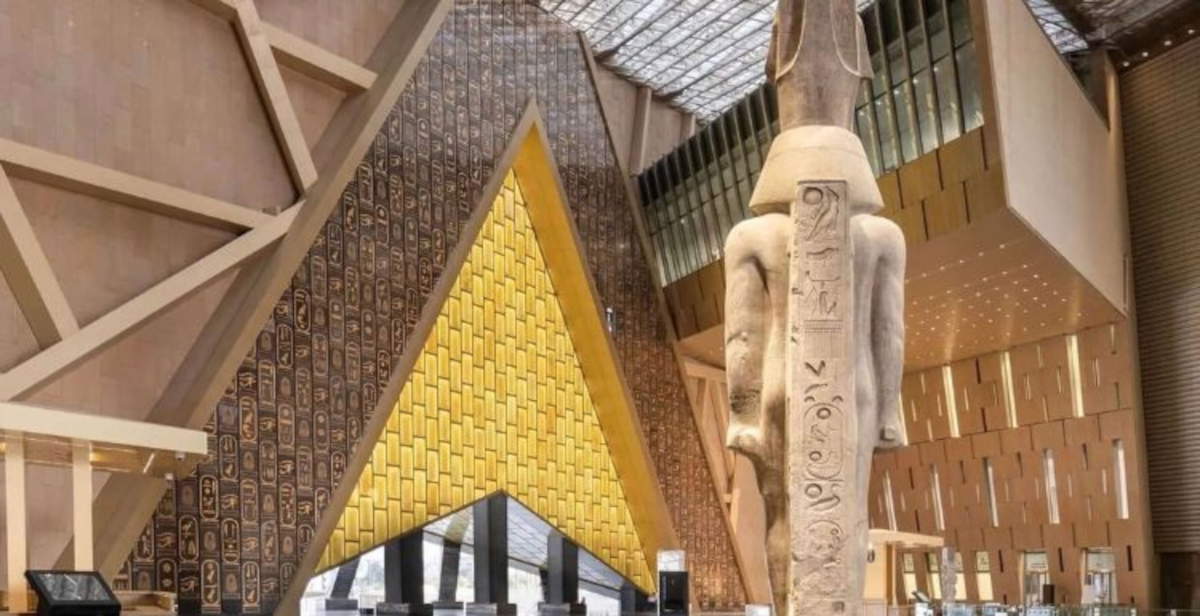The official opening of the Grand Egyptian Museum (GEM), initially scheduled for July 3, 2025, will be further delayed. This was announced by Egyptian Prime Minister Mostafa Madbouly during a press conference, in which he clarified that the full inauguration of the impressive structure will take place only during the last quarter of the year. The reason given related to “current regional developments,” a deliberately generic expression that leaves room for different interpretations but which, in this case, seems to refer to the recent tensions between Israel and Iran. The conflict between the two countries escalated last week following a series of Israeli airstrikes, to which Tehran responded with direct military action. Although Egypt is not an active participant in the clash, the unstable geopolitical environment in the area prompted authorities in Cairo to postpone an event that would have inevitably attracted the attention and presence of international delegations. This was reportedly a decision made in the name of “national responsibility,” with the intention of identifying a more favorable time from the standpoint of security and public perception.
“In light of current regional developments, it has been decided to postpone the official opening of the Grand Egyptian Museum,” the GEM explained in a statement on social media. In addition, a new date will be determined “following coordination with all relevant authorities to ensure the organization of an event that reflects Egypt’s important cultural and tourism status on the international stage. This decision also stems from Egypt’s national responsibility and its commitment to present a truly outstanding global event in an atmosphere worthy of the greatness of Egyptian civilization and its unique heritage, and in a manner that ensures broad international participation in line with the significance of the occasion.”

The Grand Egyptian Museum represents one of the most ambitious cultural and infrastructure projects in contemporary Egypt. Its realization was announced in 1992, but it has since gone through a long series of obstacles. Among them, political unrest in the region in recent decades, particularly in Gaza and Sudan, has played a decisive role in slowing down the work. These were compounded by difficulties related to the Covid-19 pandemic, which has hit the Egyptian economy hard, and persistent domestic economic issues, which have affected project management. Despite the new postponement, the museum is partly operational. As of the end of October 2024, 12 main galleries have been opened to the public, already offering a preview of the potential of the entire museum complex. The facility is located near the Giza Plateau, in an area undergoing extensive urban and tourism redevelopment. The site is strategically positioned to integrate the new museum with the pyramids, offering a continuous and interconnected cultural journey.
The importance of the GEM is on several levels. In addition to being conceived as a major tourist attraction and an economic revitalization tool for the country, it also represents an attempt to restore a significant part of Egypt’s historical and cultural identity. At a time when many archaeological finds are scattered in museums halfway around the world, the Egyptian government’s initiative aims to strengthen the national narrative through direct control of its heritage. This is not the first time the inauguration of the GEM has been delayed. Over the past three decades, the project has gone through alternating phases, often marked by external contingencies. Regional crises, internal political changes, and logistical and economic problems have systematically affected the timing of major milestones. The museum has repeatedly been the focus of official announcements promising imminent opening, only to be belied by the facts. The decision to once again postpone the official opening is in this tradition of programmatic uncertainty, although the current motivation appears to be related to an external situation rather than critical planning issues.
The July 2025 postponement, while not involving areas already open to the public, postpones a media-significant event that would have marked the completion of a decades-plus project. The Grand Egyptian Museum, once fully operational, aims to house more than 100,000 artifacts, including the entire Tutankhamun collection, never before displayed so organically. Its construction involved a multibillion-dollar investment and involved companies and designers from around the world. The building’s contemporary architecture dialogues with the monumentality of its surroundings, seeking to offer a technologically advanced experience.
 |
| New postponement for Grand Egyptian Museum: full opening scheduled for end of year |
Warning: the translation into English of the original Italian article was created using automatic tools. We undertake to review all articles, but we do not guarantee the total absence of inaccuracies in the translation due to the program. You can find the original by clicking on the ITA button. If you find any mistake,please contact us.